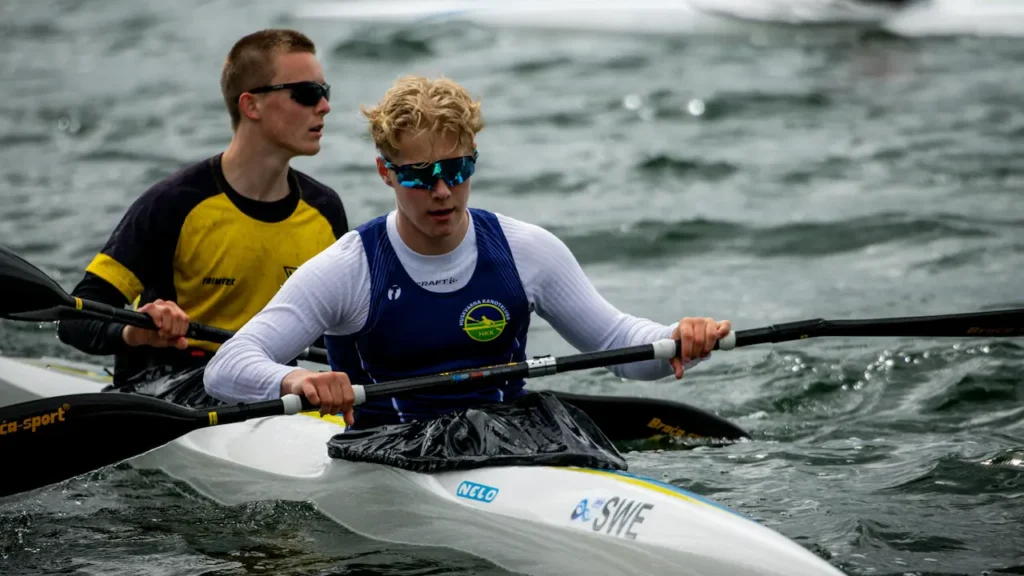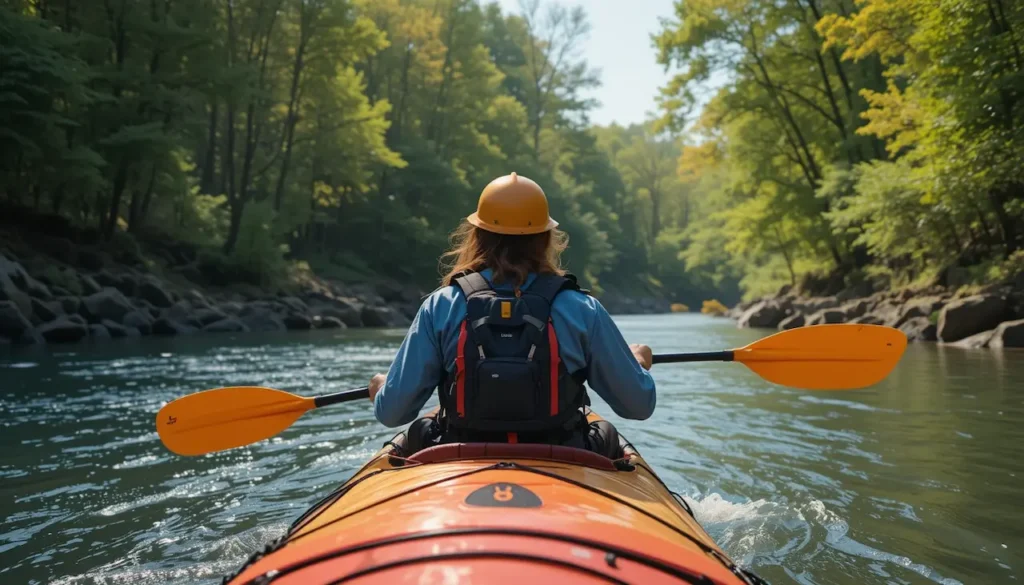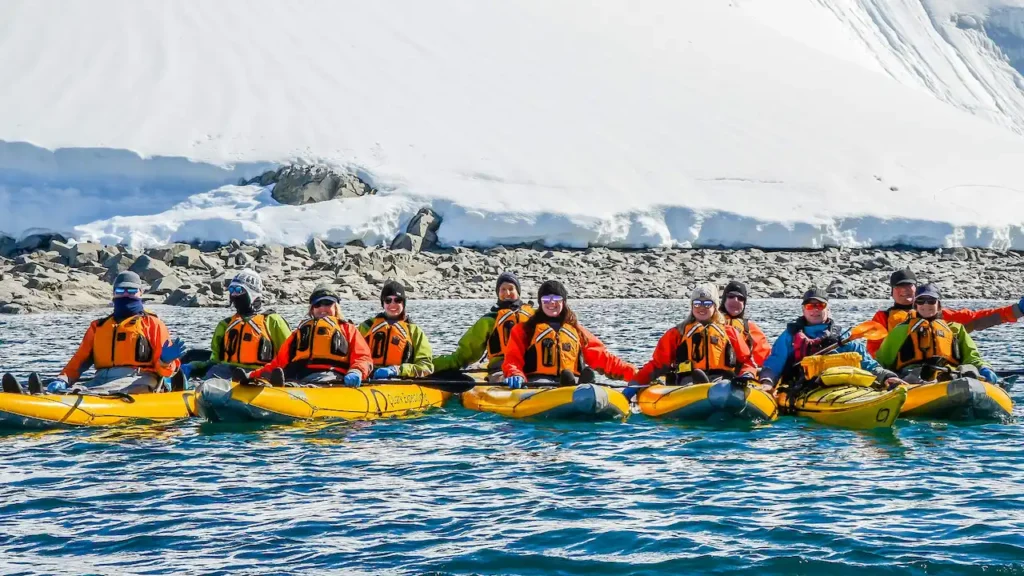You want to paddle in waters far from home. You dream of seeing coastlines, rivers, and lakes that carry stories you have never heard before. But making that dream real is not simple. A kayaking trip abroad needs careful planning or it can fall apart.
Choosing Where to Go
The first step is picking your destination. Do you want calm lakes, wild rivers, or ocean waters? Each one changes how you plan. Lakes give you peace and open views. Rivers bring fast currents and changing conditions. Oceans test you with tides and waves.
Climate matters. Cold water means more gear and training. Warm water means lighter gear but more care about sun and hydration. Research the season before you book anything. Rain or dry winds can shape your whole trip.
Look into local rules. Some countries require permits for kayaking. Others have protected areas where paddling is not allowed. Find out before you go so your trip does not face fines or sudden restrictions.
Talk to local paddling clubs or tour companies. They share details you do not find in guidebooks. Things like launch sites, safety risks, or spots worth visiting. This step saves you from surprises.
Building the Plan of Kayaking Abroad
Once you know where, start shaping the details of your trip. Begin with your route. Look at maps, guidebooks, and online trip reports. Mark your launch point, your finish point, and the stops in between. Decide how many hours you want to paddle per day, and balance that with time for rest, food, and exploring.
Check distances with care. Do not just measure in a straight line on the map. Winds, currents, and detours can make the real distance much longer. Plan your daily stretch so it is manageable for your skill and fitness level. Long days on the water may sound exciting, but they increase your risk of fatigue and injury. A steady pace makes the whole trip more enjoyable.
Add detail to your overnight plans. If you will camp, find legal sites ahead of time. If you will stay in towns, confirm lodging before you arrive. Do not assume space will be available, especially in peak travel seasons. Knowing where you will rest each night gives structure to your journey.
Always set backup routes. Rivers can flood, dry up, or get blocked by fallen trees. Coastal waters can turn rough with little warning. Having a second plan ready allows you to adapt without panic. Flexibility is not just a skill—it is part of the adventure.
Next, think about your gear. Decide if you will bring your own kayak or rent at your destination. Bringing your own means you know the boat and trust how it handles, but transport costs can be high and airlines have strict rules for bulky items. Renting saves effort but may limit size and type. Contact rental shops early to see what they offer and reserve ahead of time.
Create a full packing list. Start with the basics: paddle, sprayskirt, personal flotation device, repair kit, first aid kit, dry bags, and navigation tools. Add camping gear if you plan to stay outdoors: tent, sleeping bag, stove, and water filter. Pack layers for clothing, sun protection, and waterproof storage for essentials. Do not assume local shops will carry the items you need.
Test your gear before you go. Practice setting up your tent, using your stove, and loading your dry bags. Try a short trip at home with all your equipment packed. This shows if something is missing or too heavy. Fixing these issues in advance saves stress when you are far from home.
Think about food and water. Will you carry all your meals, or shop along the way? Some routes pass through towns where supplies are easy to buy, while others do not. For water, know if you can filter from rivers and lakes, or if you must bring your own. Safe food and clean water are as important as your kayak.
Finally, set your timeline. Mark travel days, paddling days, and rest days. A trip that goes on too long without breaks can wear down your body and mind. Rest days also give you time to explore local culture and enjoy the places beyond the water. A well-paced plan keeps you balanced and ready for each day’s paddle.
Preparing for Safety
Safety is the core of every good trip abroad. Learn the risks of the waters you plan to paddle. Tides, currents, winds, and wildlife can change conditions fast. Study tide charts, weather records, and local reports before you go. Always be ready for sudden storms or temperature drops.
Check your own skill level honestly. A calm river at home does not prepare you for rapids in another country. Coastal waters with strong tides demand navigation skills, rescue practice, and stamina. If you lack these abilities, take a course or train with guides before the trip. It is far better to prepare at home than to struggle in a place where help is limited.
Know your limits and those of your group. Everyone should be comfortable with basic rescues, wet exits, and re-entry. Practice until these moves feel automatic. When something goes wrong, panic can set in quickly. Skills you know well at home can save your life abroad.
Insurance is easy to overlook but vital. Standard travel insurance does not always cover kayaking, especially in whitewater or open sea conditions. Read the policy carefully and confirm adventure sports coverage. Medical evacuation coverage is also worth adding if you are going to remote regions. The right plan gives peace of mind for both you and your family.
Carry strong communication tools. A waterproof phone case helps in areas with coverage, but do not rely on it alone. A VHF radio is useful at sea, while a satellite messenger works anywhere with a sky view. These devices let you call for help or check in with family daily. In remote areas, this could be your lifeline.
Build a safety plan before you launch. Write down your route, daily distances, and expected check-in times. Share this with a trusted contact at home and a local authority if possible. If you do not return on time, someone will know to raise the alarm. This step takes minutes but can save your life.
Do not forget local risks. Some regions have jellyfish, crocodiles, or other dangerous animals. Others may have sudden fog, strong sun, or freezing water. Research these details carefully and prepare with the right clothing, repellents, or protective gear.
Finally, practice decision-making. Learn when to turn back, when to wait, and when to push forward. Many accidents come from ignoring warning signs or trying to finish a goal no matter the risk. A safe paddler knows that changing the plan is part of the plan.
Adding the Extras
A kayaking trip abroad is not just about the water. The places you pass hold culture, food, and history worth exploring. Plan time to walk through markets, visit small towns, or try local meals. Rest days are not wasted—they refresh your body and give you memories beyond paddling.
Learning a few words in the local language is a small step with a big impact. Phrases for greetings, directions, and help make people more open to guiding you. Locals may point you to safe routes, launch points, or hidden sights. Carrying a small phrasebook or phone app can bridge gaps when you need it most.
Plan land transport with as much care as your route on water. Think about how you will reach the launch site at the start. At the end, arrange transport back from your finish point. Book shuttles, buses, trains, or car rentals in advance to avoid last-minute stress. Many paddlers forget this step and find themselves stranded with heavy gear.
Food is another key part of planning. Will you carry freeze-dried meals, buy fresh food along the way, or mix both options? Each country has its own choices, and some areas may not sell what you expect. Research where you can buy supplies and where you need to carry them. Local food can add flavor to your trip, but safe storage and clean water should always come first.
Budget for everything beyond paddling. Permits, transport, lodging, meals, and small fees can add up fast. Set aside a clear amount for these extras so you do not run short. Always keep an emergency fund ready for unplanned changes, medical needs, or equipment loss.
Do not forget about documentation. Some areas require special permits for camping or access to parks. Others may ask for proof of insurance or licenses. Prepare these papers in advance so you do not face delays. Keep digital and paper copies in safe spots.
Finally, think about balance. The best trips abroad are not just about distance covered but about experience gained. Adding cultural stops, safe rest days, and local interaction makes your journey richer. You return home with more than miles—you return with stories you could not have found on the water alone.
Now comes the part that brings it all together. Before you leave, test everything. Pack your gear and try it on a local trip. This shows if something is missing or broken. Small mistakes are easier to fix at home.
Make copies of your documents. Keep one in your bag, one with a trusted person at home, and one digital copy. This protects you if something is lost.
Stay flexible once you arrive. Weather may not match the forecast. Conditions may force a route change. Good paddlers adapt without frustration. The trip is still yours to enjoy.
Most of all, remember why you started this plan. Kayaking abroad is not only about paddling. It is about the freedom of moving across new waters. It is about meeting new people and finding moments of calm or excitement far from home.




